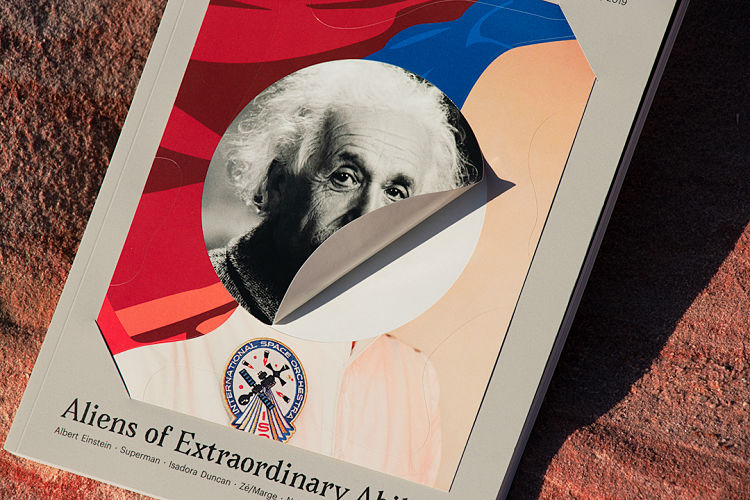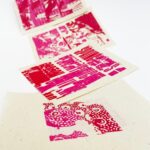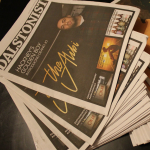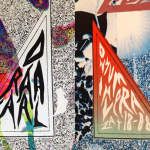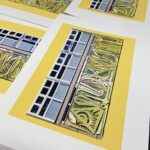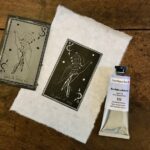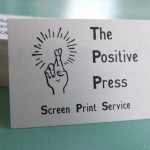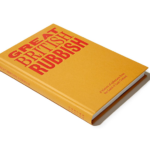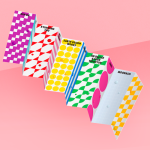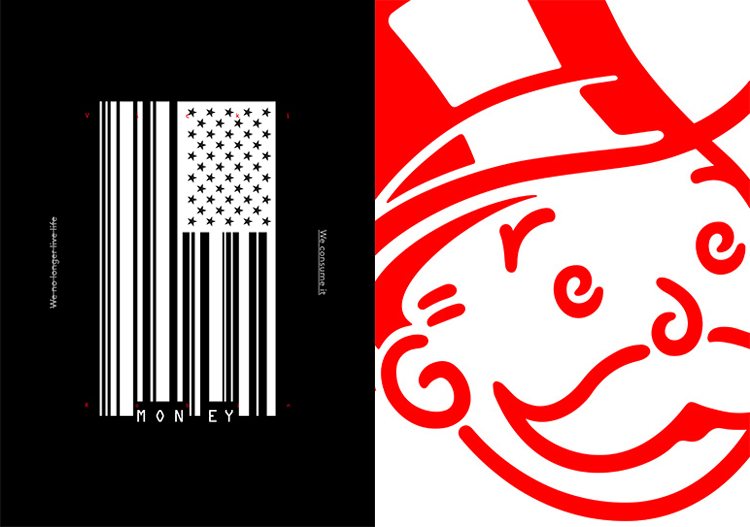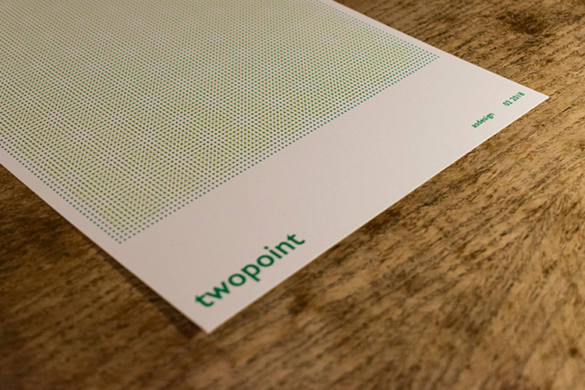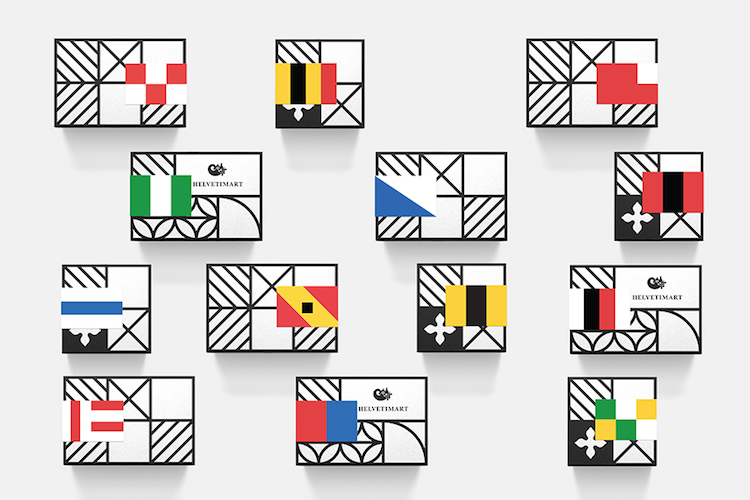Lisa Moura describes herself “as an introvert who uses her work as a medium to speak for herself.” What it says, however, is far from self-indulgent. Her thoughtful, gently experimental work across visual identities, print and publication designs, posters and more demonstrate how her design is driven not just by the world of graphics, but a curiosity for a broad range of artforms—as well as for the world in general.
She’s currently collaborating with maat (Museum of Art, Architecture and Technology), as its head designer, and also heads up her one-woman studio, Frau im Mond. Founded in 2018, the studio takes its name from a Fritz Lang film. As such, it’s no coincidence that cinema has been a big influence on Moura’s work. “Considered by many as a Gesamtkunstwerk, cinema encompasses a wide range of expressions that I strive to use in my own practice as a designer: visual arts, sound, motion, etc.,” she says. “Cinema is also a great storyteller and I always try to find a story to tell, no matter the medium or format I work with or the scale of the project. On a lighter note, cinema is my ultimate inspiration for all dumb, genius or just simply batshit crazy ideas.”
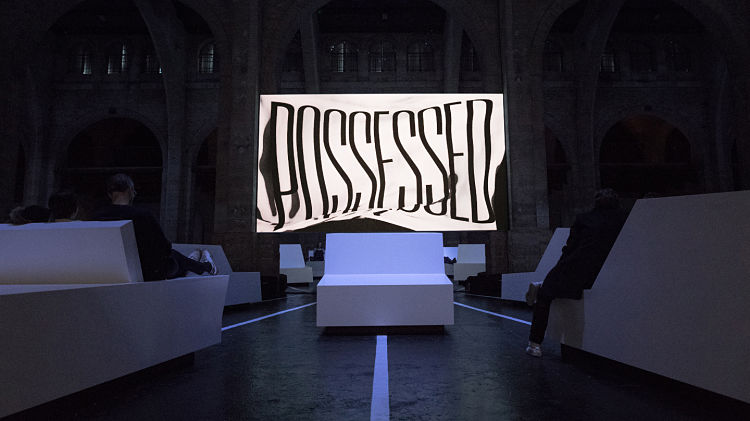 Her reasons for setting up the studio were for both personal and professional reasons; she wanted to create a “solid foundation for it to grow without being under the ‘shadow’ of my own name,” she says, adding that clients and collaborators seem to take her more seriously under the Frau im Mond studio title, rather than just as her own name.
Her reasons for setting up the studio were for both personal and professional reasons; she wanted to create a “solid foundation for it to grow without being under the ‘shadow’ of my own name,” she says, adding that clients and collaborators seem to take her more seriously under the Frau im Mond studio title, rather than just as her own name.
Now based in Lisbon, Moura’s had an international career so far. She graduated from her Communication Design degree at the Fine Arts Faculty in Lisbon in 2011, before working for a year in her birthplace, Portugal, in a graphic design studio. The design scene in Lisbon, she says—and Portugal in general—”is, unfortunately, still very much a privileged area to work in and survive from, despite the creative boom Lisbon has faced in the past few years.”
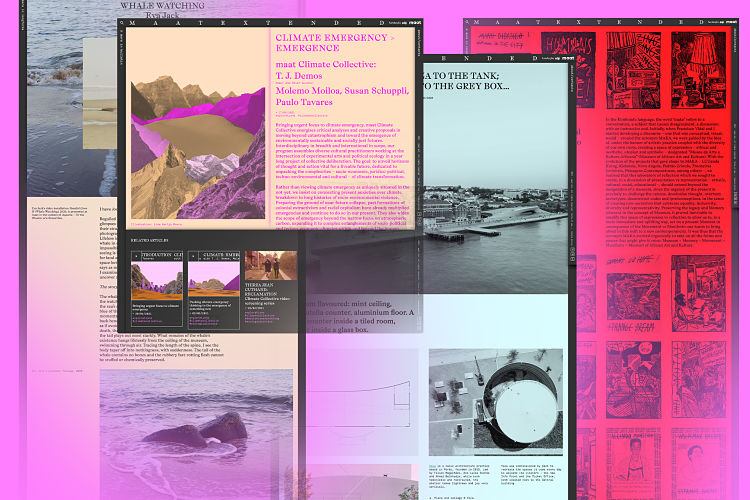
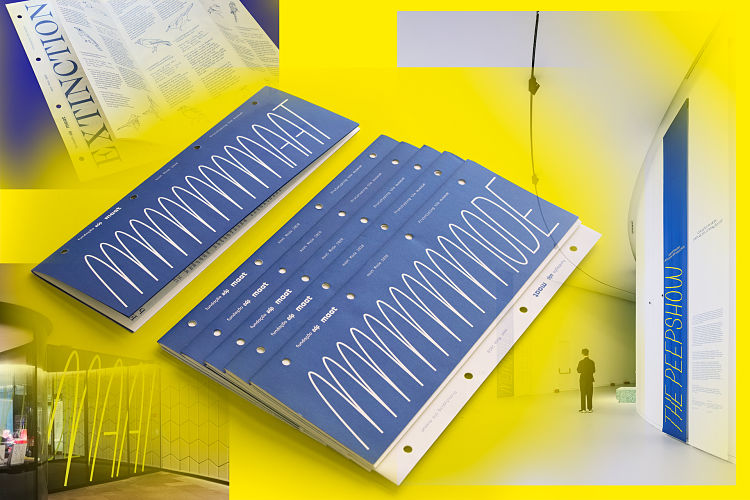 She then spent around three years in São Paulo, Brazil, working with Fábio Prata and Flávia Nalon at ps.2 arquitetura + design. “Still to this day—after having left Brazil almost five years ago—I can say that it has changed me to my core not only personally as well as professionally. It is impossible to be indifferent to its culture and to not take inspiration from its enriching art, music and literary history,” says Moura. She graduated from her MA in Spaces and Communication at HEAD Genève in 2017. Moura says: “Geneva, because of its context and the intertwined history of Switzerland with the history of design, and particularly graphic design, has a nurturing hub in the art schools, which not only provide a solid groundwork for their students but also provide a continuous support to its former students to take part in projects with cultural and commercial institutions.”
She then spent around three years in São Paulo, Brazil, working with Fábio Prata and Flávia Nalon at ps.2 arquitetura + design. “Still to this day—after having left Brazil almost five years ago—I can say that it has changed me to my core not only personally as well as professionally. It is impossible to be indifferent to its culture and to not take inspiration from its enriching art, music and literary history,” says Moura. She graduated from her MA in Spaces and Communication at HEAD Genève in 2017. Moura says: “Geneva, because of its context and the intertwined history of Switzerland with the history of design, and particularly graphic design, has a nurturing hub in the art schools, which not only provide a solid groundwork for their students but also provide a continuous support to its former students to take part in projects with cultural and commercial institutions.”
Citing her influences as Experimental Jetset, Jan Tschichold, Paul Rand, Josef Müller Brockman and Portuguese designer Sebastião Rodrigues; Moura describes her work as that which “doesn’t shy away from otherworldly challenges”. What that means in other terms is a gentle railing against the idea of design students being taught to “think outside the box”. She says that “the ‘box’ has become too much of a small metaphor for the obstacles we need to overcome as a community. I like to think of my work at a human scale and, today, this means acting at a planetary scale and, therefore, embracing ‘otherworldly challenges’.”
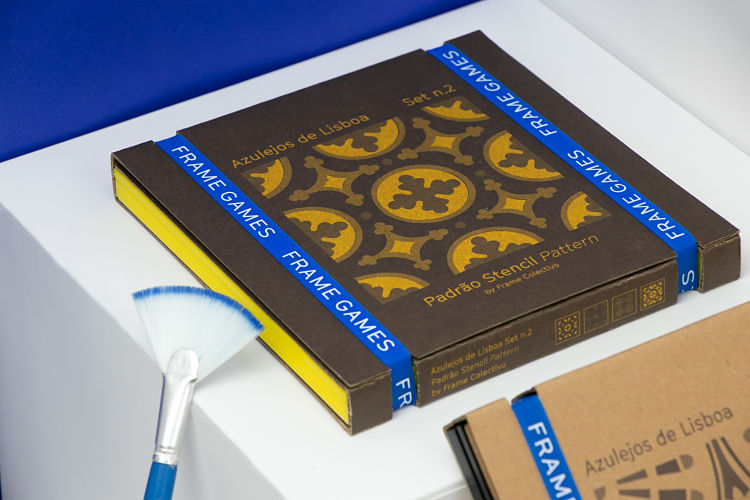
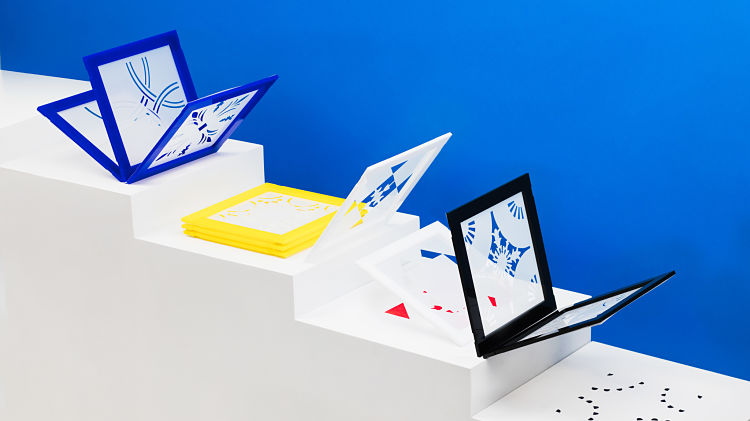 Frau im Mond’s work is largely for the cultural sector over commercial work, and Moura says she loves to work on research-led projects. “The clients I enjoy working with the most are those driven by curiosity and humility,” she says. “Clients who are learning as much as you are during the process of working together.”
Frau im Mond’s work is largely for the cultural sector over commercial work, and Moura says she loves to work on research-led projects. “The clients I enjoy working with the most are those driven by curiosity and humility,” she says. “Clients who are learning as much as you are during the process of working together.”
One piece of work that caught our eye is Alien Magazine, a publication conceived and designed by Moura which aims to explore the meaning of “alien” through a series of visual and written essays, interviews and investigative reports. Per the blurb, it “invites citizens, no matter their shape, size, color, profession, political party, creed, belief, nation, planet to rethink social norms and labels.”
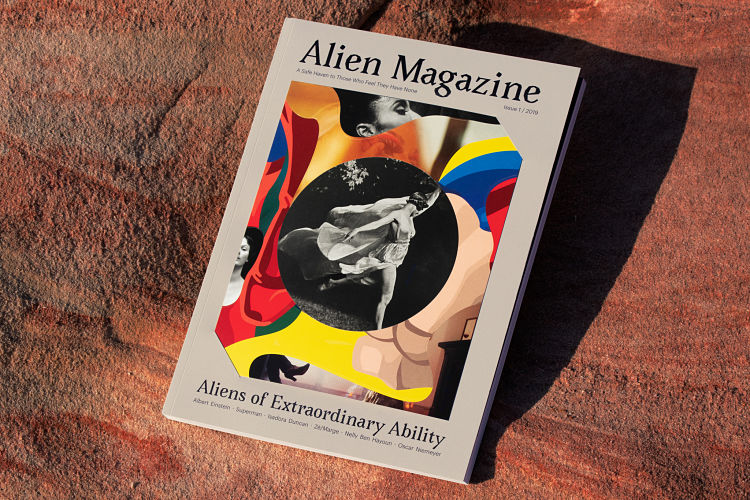 The design of the magazine aims to reflect the content in underscoring the notion of contrasts,played out through everything from the typeface—display typeface Avara, a classic serif font with rough edges—to the paper for the cover, which is from Arjowiggins’ Curious Matter collection and Moura describes as having “a rough, strange and almost unwelcome touch” as a counterpoint to the softer interior papers. Text is arranged in various ways; some in traditional blocks, others in curved lines, others so as to be barely legible. The same logic was applied to the online version of the magazine, which “uses simple scroll features and breaks these with unusual functionalities,” says Moura. She adds, “Long before the pandemic, I had this urge to explore the inner-workings of what it means to be a community, through the lens of outsiders. Alien Magazine is a way of exploring our shared findings in trying to answer these questions of ‘belonging’, ‘community’, ‘collective-self’ and ‘collective-identity’, etc.”
The design of the magazine aims to reflect the content in underscoring the notion of contrasts,played out through everything from the typeface—display typeface Avara, a classic serif font with rough edges—to the paper for the cover, which is from Arjowiggins’ Curious Matter collection and Moura describes as having “a rough, strange and almost unwelcome touch” as a counterpoint to the softer interior papers. Text is arranged in various ways; some in traditional blocks, others in curved lines, others so as to be barely legible. The same logic was applied to the online version of the magazine, which “uses simple scroll features and breaks these with unusual functionalities,” says Moura. She adds, “Long before the pandemic, I had this urge to explore the inner-workings of what it means to be a community, through the lens of outsiders. Alien Magazine is a way of exploring our shared findings in trying to answer these questions of ‘belonging’, ‘community’, ‘collective-self’ and ‘collective-identity’, etc.”
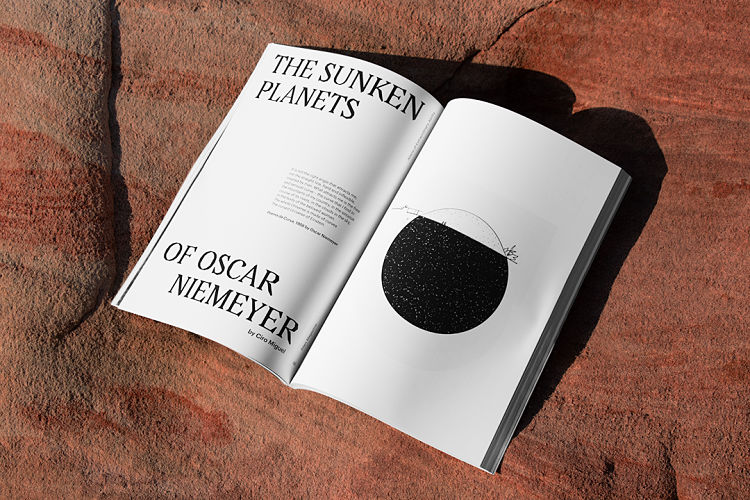
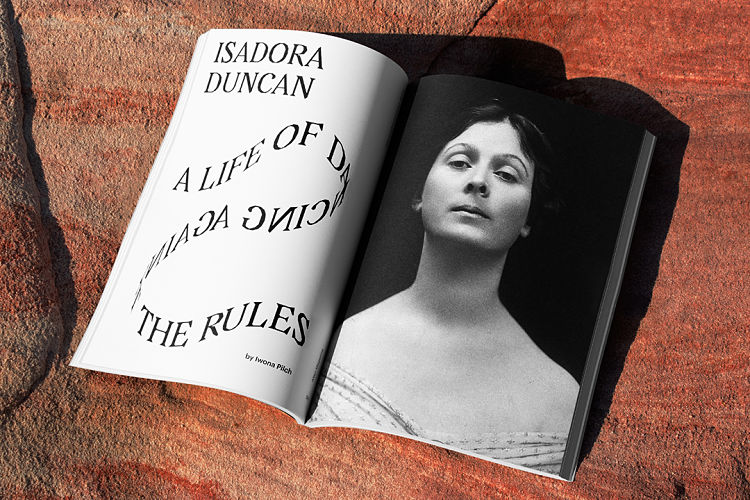 The future of Frau im Mond, Moura hopes, will involve more community-focused self-initiated projects. On a personal level, she hopes to get more involved in design education. “As a former design student myself I firmly believe in the importance schools and mentors have in the foundation of future designers and, more importantly, in the foundation of designer-citizens,” she says. “I have learned (I am learning!) the importance of knowing how to critique and, consequently, how to interpret a critique.
The future of Frau im Mond, Moura hopes, will involve more community-focused self-initiated projects. On a personal level, she hopes to get more involved in design education. “As a former design student myself I firmly believe in the importance schools and mentors have in the foundation of future designers and, more importantly, in the foundation of designer-citizens,” she says. “I have learned (I am learning!) the importance of knowing how to critique and, consequently, how to interpret a critique.
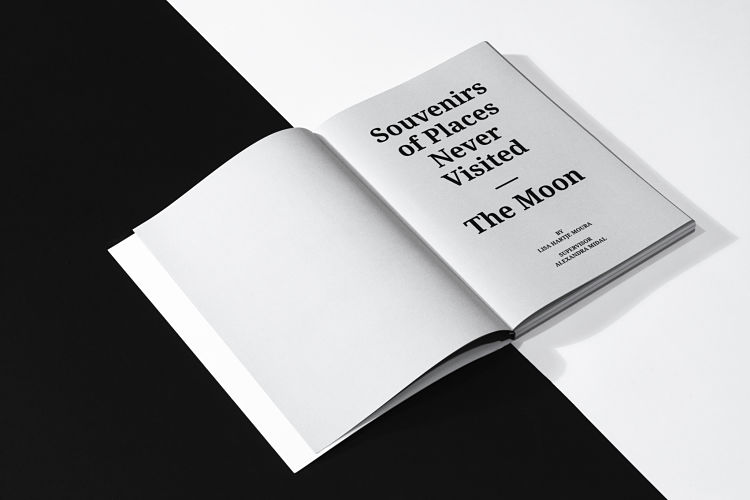
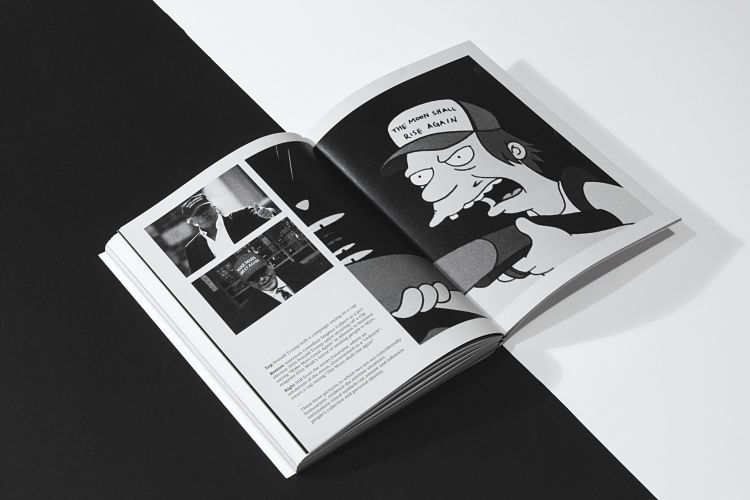 “Our work as designers is subject to critique every day, in every way, by every person and learning to interpret critiques is perhaps one of the most important tools in a designer’s toolkit. As an introvert who uses her work as a medium to speak for herself, critiques have put me in very vulnerable positions at times. The journey to better interpret critiques is a long and important one, that I think every designer should partake in, in order to improve personally and professionally.”
“Our work as designers is subject to critique every day, in every way, by every person and learning to interpret critiques is perhaps one of the most important tools in a designer’s toolkit. As an introvert who uses her work as a medium to speak for herself, critiques have put me in very vulnerable positions at times. The journey to better interpret critiques is a long and important one, that I think every designer should partake in, in order to improve personally and professionally.”
You might like...
- Autobahn - November 26, 2021
- Alphabetical - November 12, 2021
- SOFA Universe - November 8, 2021

